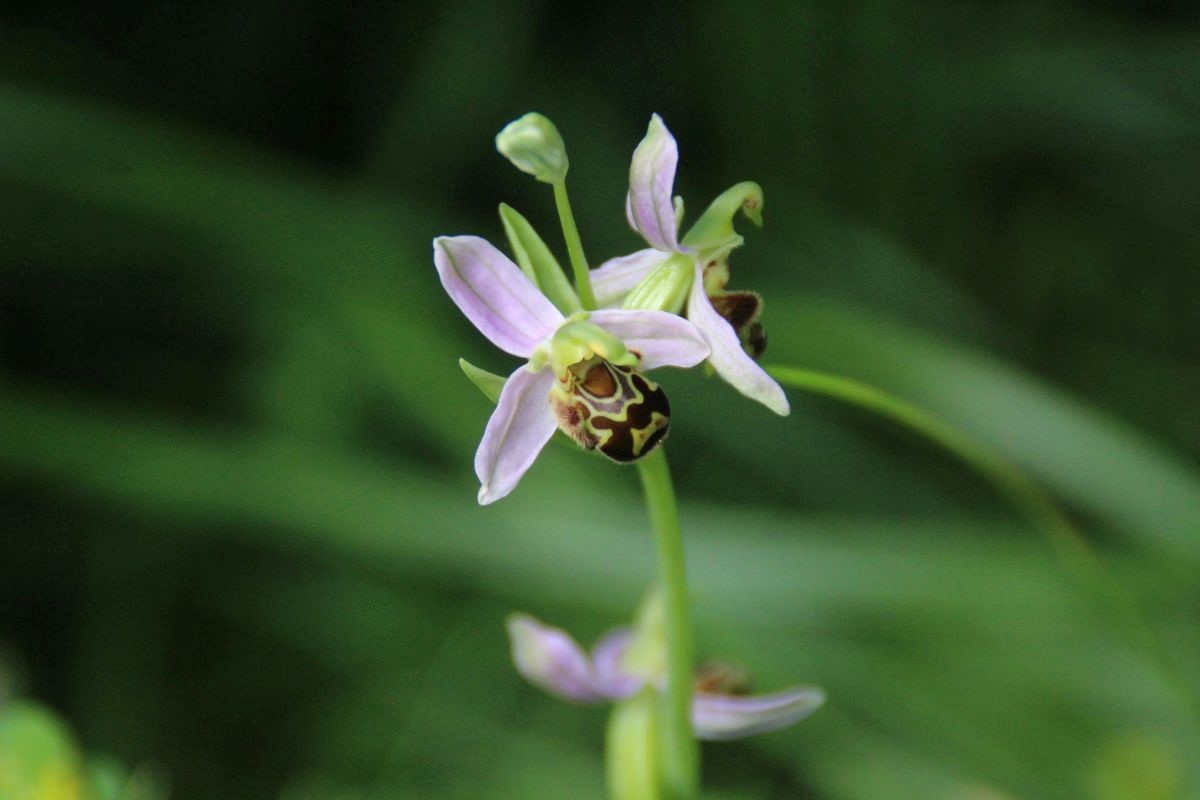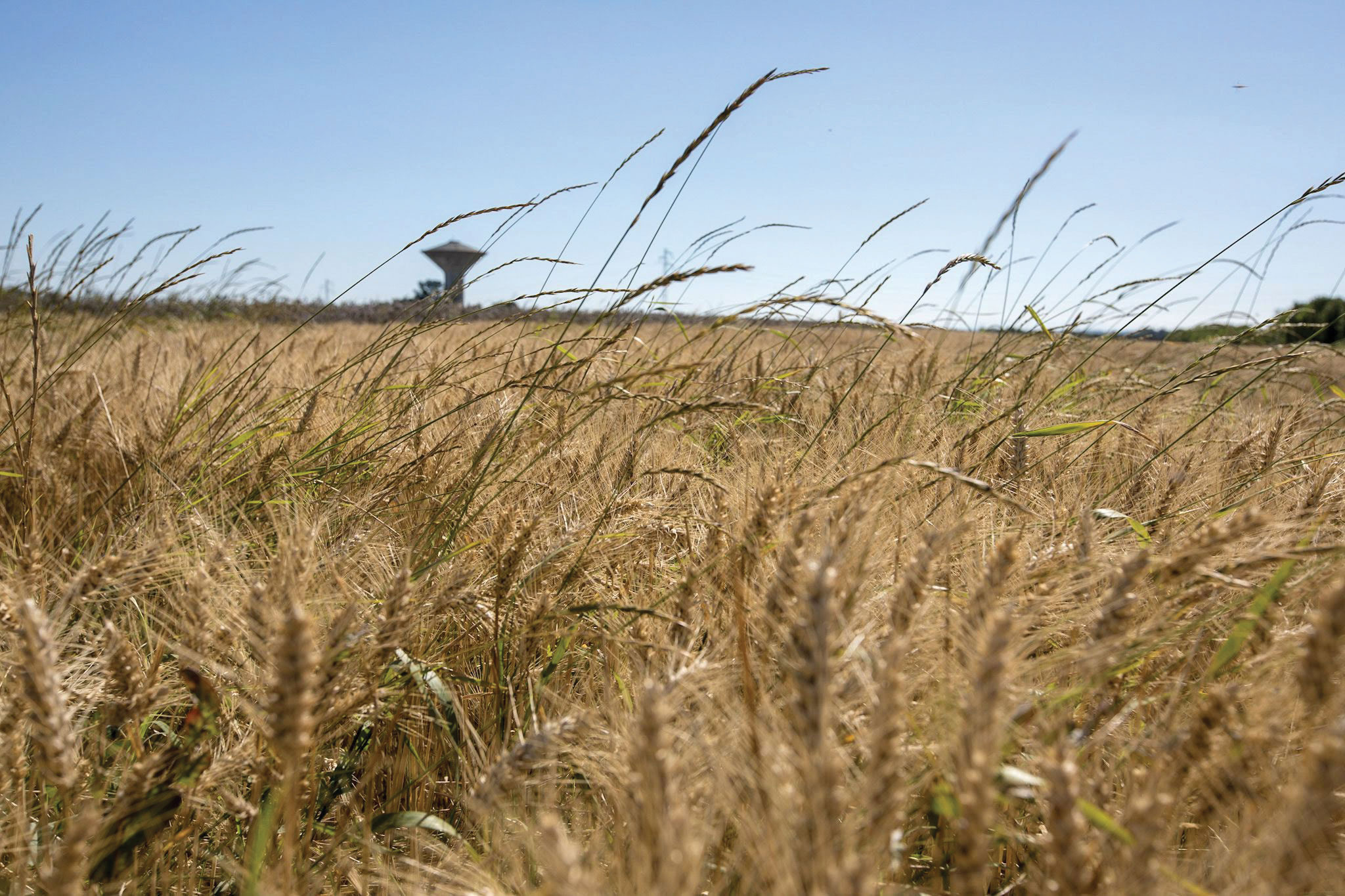- Sustainable Tourism in Lyon
- Experiences to live
- Biodiversity in Lyon
Biodiversity in Lyon
Lyon is surprisingly rich in biodiversity. Read on to explore the amazing variety of plant and animal life in the Lyon metropolitan area.
Experiences to live
Last updated date : 17/06/2025
You don’t need to go out into the countryside to listen to birdsong and walk barefoot in the grass. From orchids, beavers and bees to the wild plants growing through the paving stones, nature is everywhere in Lyon, with its incredible biodiversity.
The Lyon metropolitan authority and local non-profits all work hard to protect and develop nature in the city.

See all pictures
Biodiversity in Lyon: surprisingly rich
While it may not be immediately obvious, the Lyon metropolitan area is bustling with biodiversity. The City of Lyon has produced an atlas of urban biodiversity based on observation of plant and animal life in the city, in conjunction with nature protection organisations such as Ligue de Protection des Oiseaux (LPO) (BirdLife France), à France Nature Environnement (FNE), Arthropologia and Société Française d'Orchidophilie (SFO).
In the space of 30 years, 2,900 species have been spotted within the territory of Lyon (and the inventory is not exhaustive). They include the bee orchid (Ophrys apifera), which bears a striking resemblance to the eponymous insect, and the pyramidal orchid (Anacamptis pyramidalis), a wild orchid renowned for its distinctive fox-tail shape.
Animal life observed in Lyon includes the migrant hawker, (Aeshna mixta), a dragonfly that feeds on mosquitoes, the Eurasian beaver (Castor fiber) which has returned to the Guillotière neighbourhood in recent years, the common midwife toad, the male of which carries the eggs, the Common Kingfisher (Alcedo atthis) with its orange and turquoise plumage, and the list goes on... Keep your eyes open and take in the wonders of nature.
To find out more, you can browse the Atlas de la biodiversité lyonnaise (the Lyon atlas of biodiversity) and the Guides Lyon Nature (Lyon nature guides)
Hot spots for biodiversity in Lyon
While plants, insects and small animals can be found everywhere (keep an eye out for pavement gardens and micro-flower beds tended by local residents), the Lyon metropolitan area’s many parks and gardens offer some of the best spots to observe plant and animal life. To promote biodiversity, the city’s green spaces department has stopped using pesticides and mowing and cutting plants. The result is more flowers, which means more insects and more birds. Not to mention the delight they bring by adding colour and life to the cityscape.
There are a few places that stand out when it comes to exploring Lyon’s beautiful biodiversity:
- Tête d'Or park: covering 105 hectares (260 acres) in the heart of Lyon is France’s largest urban park. With rose gardens, a zoological garden, a botanical garden, majestic trees (7,661 in total) and more, Tête d’Or Park is an excellent place to explore local biodiversity, as well as some exotic species that are conserved there.
- Parc of La Feyssine: to the north of Villeurbanne, the urban nature park of La Feyssine is a former well field for drinking water. In this 45-hectare (111-acre) park opened in 2002, nature and biodiversity are left free to develop. There are several zones with distinct vegetation: the natural banks of the Rhône, the poplar grove and orchid meadow and the wooded areas along a forked path. Beavers, rabbits, coypus and birds all live side by side here. The park of La Feyssine is home to several dozen protected animal and plant species.
- Domaine de Lacroix-Laval: 115 hectares (284 acres) of beautiful greenery, meadows, ponds, streams and woods surrounding a chateau... Domaine de Lacroix-Laval is listed as a “natural area of ecological, faunal and floristic interest” (ZNIEFF). The park is inhabited by 17 different bat species and 15 wild bee species.
- Parc de Saône: in the Confluence district, Parc de Saône is comprised of water gardens and green ditches that capture run-off water, as well as neighbourhood gardens and greened streets. In this riverside park, you can find some 160 plant species and around fifty insect species.
Consult the guide to nature trails in the Lyon metropolitan area, which lists some of the animal and plant species you can spot while wandering around Lyon: Guide des sentiers nature (in French)
Biodiversity-related events in Lyon
- Fête de la Nature: each year around 22 May (International Day for Biological Diversity), this celebration of nature includes free events held throughout the metropolitan area.
- Les 48 heures de l’agriculture urbaine: a springtime event that promotes urban agriculture, biodiversity and food resilience.
- Rendez-vous aux jardins: a weekend event, also in the spring, during which you can explore the metropolitan area’s most beautiful parks and gardens. If it’s available, don’t miss a visit to the watercress beds of Vaise, a wetland with exceptionally rich plant and animal life that is usually closed to the public.
- La Nuit de la Chauve-Souris: take part in free nocturnal outings organised on International Bat Night.
The metropolitan area’s resource sites open their doors to visitors: at the Centre eau et nature de l’Îloz you can learn about the Rhône river environment through exhibitions, gardens, activities and shows; at the Maison de l’Environnement de la Métropole de Lyon, you can explore the games and media libraries.
7 ways to be an eco-responsible traveller in Lyon and preserve the city's natural sites
- Respect Lyon's natural environment: Follow the signposted paths in the urban parks and natural areas such as the Parc de la Tête d'Or or the banks of the Rhône. Avoid disturbing the urban fauna and local flora that make up Lyon's ecological wealth.
- Minimise waste in the city: Use the many recycling bins available in Lyon's public spaces. Use reusable water bottles rather than plastic bottles when walking in parks or along rivers. In Lyon, we refill your drinking bottle!
- Opt for Lyon's public transport: Use the TCL network (metro, tramway, bus), Vélo'v or walk to discover Lyon's urban biodiversity while reducing your carbon footprint.
- Preserve the region's natural resources: Respect the wetlands on the banks of the Saône and Rhône rivers, which are essential for local biodiversity. Avoid wasting water, particularly during the summer months.
- Learn and share about Lyon's ecosystem: Find out about the local flora and fauna at the Botanical Gardens or on guided tours organised by the Maison de l'Environnement. Share this knowledge to raise awareness of the need to protect urban biodiversity.
- Be careful with urban wildlife: keep a respectful distance from the many birds in the Parc de la Tête d'Or or the beavers on the banks of the Rhône. Don't feed wild animals, even in urban parks.
- Support Lyon's ecological initiatives: Take part in biodiversity conservation initiatives organised by the city or local associations, such as participatory planting or riverbank clean-up days.
Magazine
We also talk about it in...

Out and about
Feyzin
Located just few kilometres to the south of Lyon, Feyzin is known for its refinery, but there is more to it than that. Surprisingly, one third of its surface area is a natural space that is a sanctuary for biodiversity. This has earned it the title ‘Ville Nature’. We take a closer look.
Discover